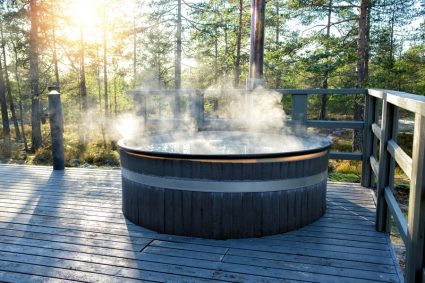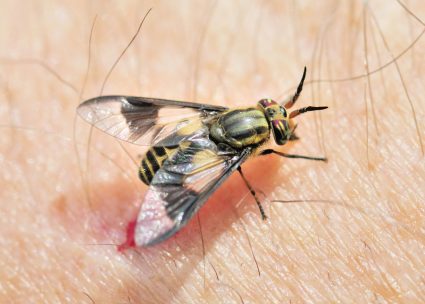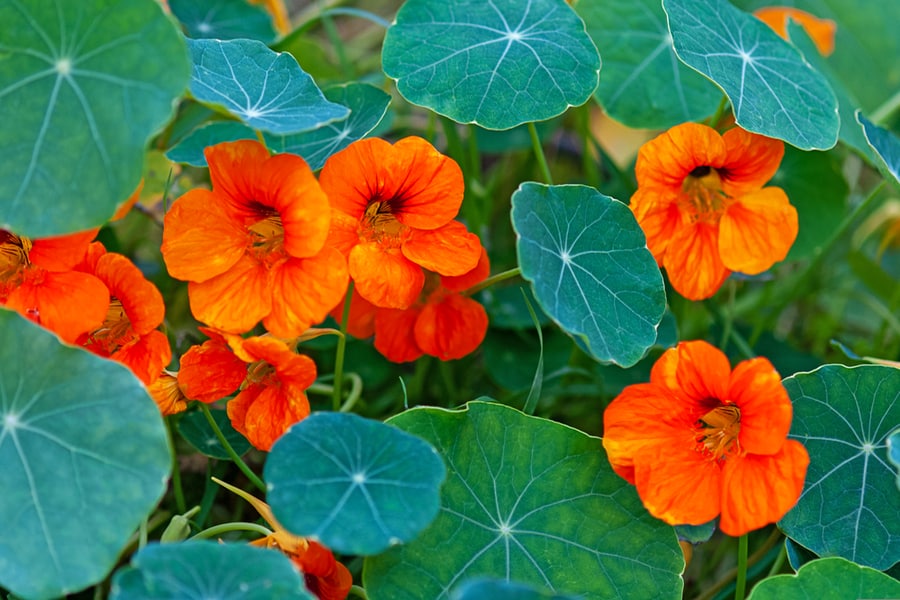
You may have seen nasturtiums planted around your house or garden, but did you know these pretty flowers have powerful pest-repelling properties? Nasturtiums are a great choice for repelling pests, but what do they repel?
Nasturtiums can keep whiteflies, caterpillars, slugs, ground beetles, and flea beetles away from your other plants. So if you’re looking for a natural way to keep your garden pest-free, consider planting some nasturtiums!
This is a comprehensive guide that will teach you everything you need to know about repelling pests with nasturtiums. You’ll learn how to plant, care for, and harvest nasturtiums to keep your garden healthy and free of pests.
What Is Nasturtium?

Nasturtium is a flowering plant that belongs to the genus Tropaeolum. The most common species is Tropaeolum majus, native to Peru and Bolivia. Nasturtiums are characterized by their showy flowers and round leaves. The plants can grow up to 3 feet tall and produce blooms in various colors, including red, yellow, and orange.
Ideal Qualities of Nasturtiums
1. Ornamental Plant

Nasturtiums are popular garden plants and are often used as ornamental features in landscaping. These beautiful and versatile plants can be used in many ways. Whether planting them in your garden or using them to flavor your food, nasturtiums will brighten your day.
2. Easy To Grow

These flowery plants are easy to grow and require little maintenance. They can be planted in soil that is not particularly fertile and prefers full sun or partial shade. Nasturtiums are also tolerant of drought and poor drainage. Seeds, cuttings, or divisions can propagate the plants.
3. Used in Medicine
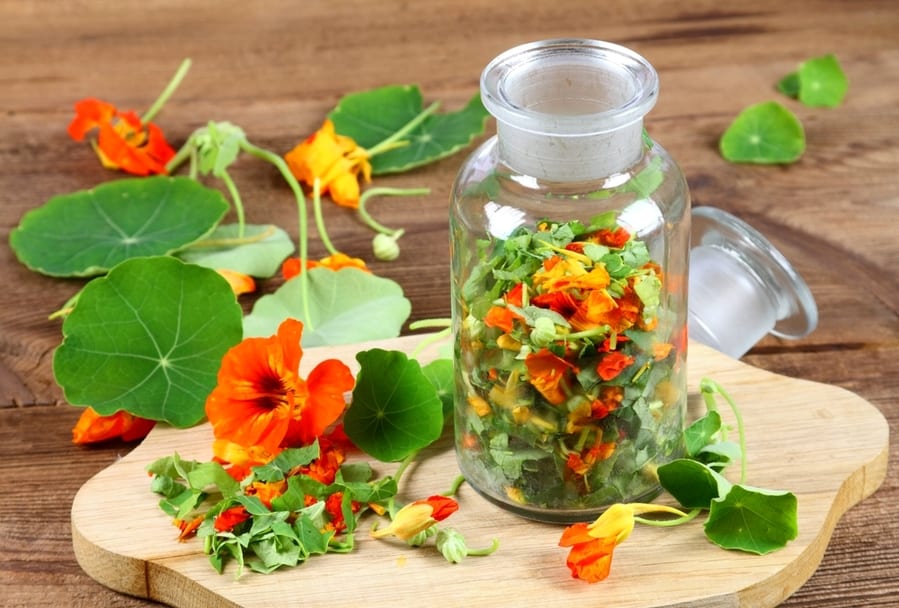
Nasturtiums have a long history of use in traditional medicine. The leaves and flowers of the plant are often used to make teas or infusions that promote digestion and relieve respiratory ailments. Nasturtiums are also used in poultices and salves to treat wounds and skin irritations due to their antifungal and antiseptic properties.
4. Edible

The leaves and flowers of nasturtiums are edible and have a peppery flavor. They can be added to salads or used as garnish. The seeds of the plant can be pickled and used as a condiment.
Does Nasturtium Repel Pests?
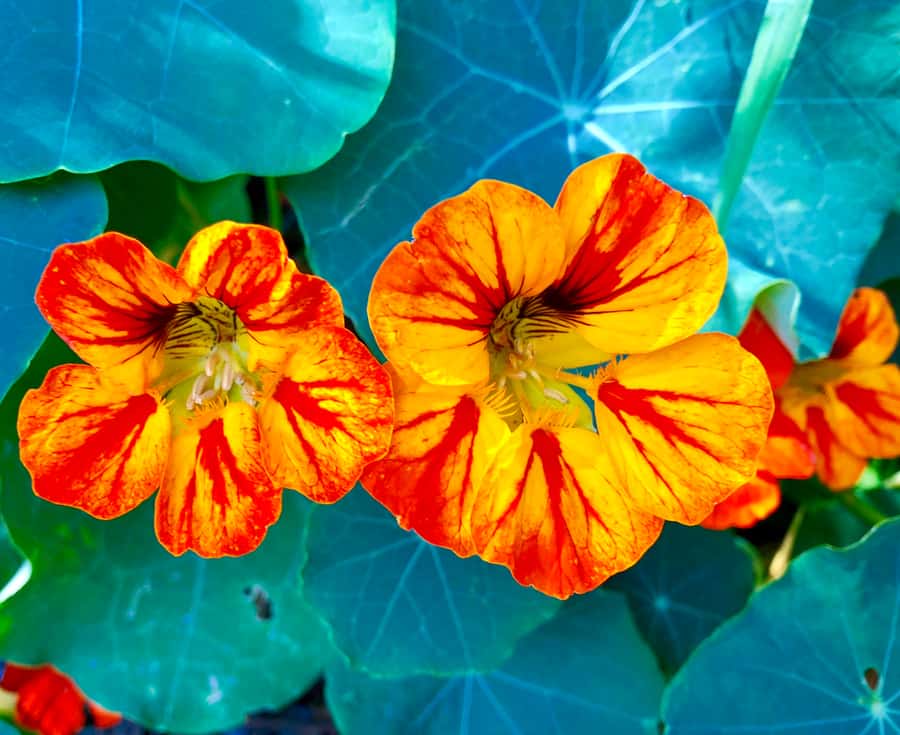
Nasturtiums are a great addition to any garden, not only because of their vibrant flowers and foliage but also because of their pest-repelling properties. Nasturtiums are often grown as companion plants, as they are believed to repel pests.
Nasturtiums contain toxic compounds to many common garden pests, making them a natural and effective way to keep your garden free of unwanted visitors. They produce a chemical called isothiocyanate, which is toxic to many common garden pests.
While nasturtiums may offer some pest control benefits, it is essential to note that they are not a “magic bullet” and will not repel all pests. Additionally, nasturtiums are not selective in the pests they repel so they may deter beneficial insects such as bees and ladybugs.
What Pests Are Repelled by Nasturtium?
Pests are attracted to nasturtiums because of their strong, pungent smell. Isothiocyanate contained by nasturtium deters many pests, including bugs, whiteflies, and others listed below:
1. Whiteflies

Whiteflies are one of the home garden’s most common and persistent pests. Nasturtiums are also known to be effective in repelling whiteflies.
Many gardeners use them as a natural way to control these pests. Whiteflies are attracted to the nectar of nasturtium flowers, but the plant’s strong scent also repels them.
Additionally, the leaves of nasturtium plants can be used as much to deter whiteflies from attacking other plants. For this remedy, blend the leaves in a blender with some water, strain, and then put the mixture in a spray bottle. You can also plant nasturtiums around your garden.
2. Caterpillars

Nasturtiums are also used as a caterpillar repellent. Nasturtiums contain ingredients that are toxic to caterpillars. When these pests ingest the chemical, it can kill or make them sick. For this reason, nasturtiums make an excellent natural insecticide for caterpillars.
You can plant nasturtiums around the perimeter of your garden to create a barrier that caterpillars will not cross. The flowers and leaves can also be chopped and sprinkled around infested plants. This will deter the caterpillars from eating the plants and hopefully kill them before they do too much damage.
3. Slugs

Nasturtiums are also known for their ability to deter slugs. While nasturtiums don’t necessarily repel all slugs, they can help to keep them away from other plants in your garden.
Some gardeners believe that nasturtiums can help keep slugs away from other plants. Some scientific evidence supports this claim.
Nasturtiums contain metaldehyde that is toxic to many invertebrates, like slugs. That deters slugs from eating nasturtiums and may make them less likely to eat other plants nearby.
4. Flea Beetles
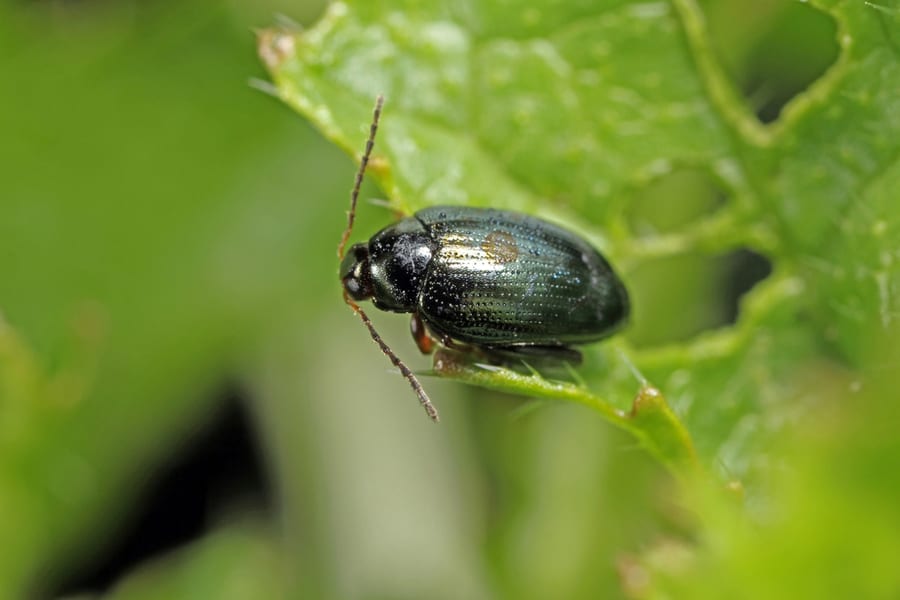
It has been said that nasturtiums can also help to repel flea beetles. Flea beetles are tiny black or brown bugs that can jump high and are attracted to certain plants, including nasturtiums. They can cause damage to plants by eating the leaves and stems. Some gardeners plant nasturtiums near other plants to help keep flea beetles away.
5. Ground Beetles
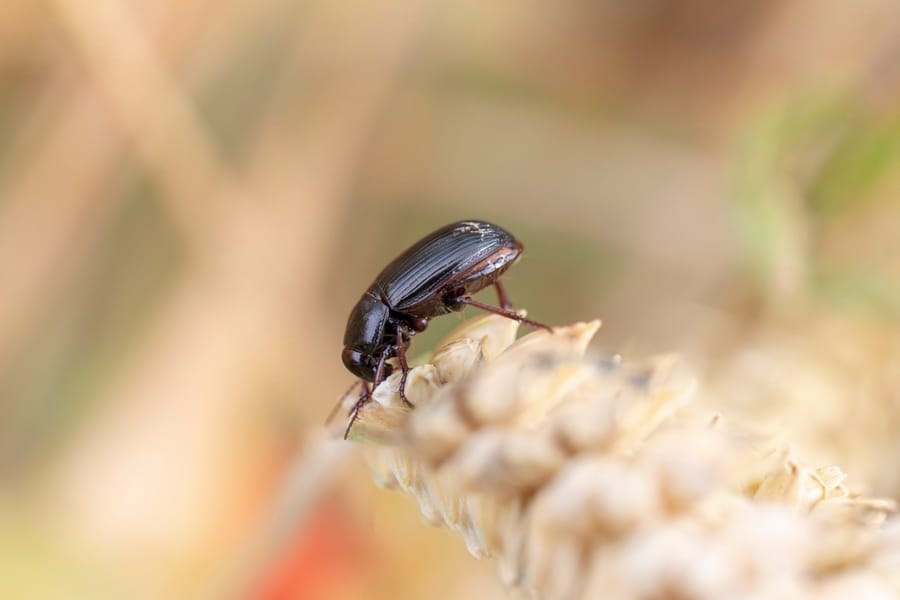
Nasturtiums are also excellent repellers for ground beetles due to their strong scent. This makes them a great natural option for keeping these pests away from your home and garden.
To use nasturtiums as a repellent, plant them around the perimeter of your property. You can also place them near doorways and windows to help keep ground beetles from entering your home.
Besides this, there are some other pests, including aphids, squash bugs, and mosquitos, that you can control with the help of this magic plant!
How To Use Nasturtium for Pests Controlling?
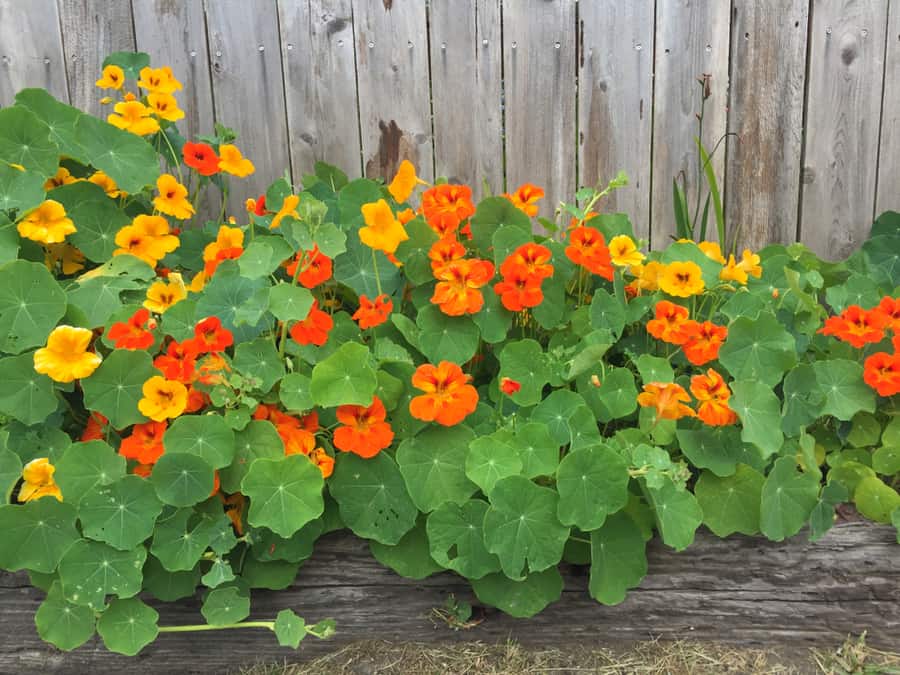
There are a few different ways to use nasturtiums to deter pests. You can plant them around the perimeter of your garden or intersperse them throughout your planting beds. You can also make a pest-repelling spray by crushing nasturtium leaves and flowers and mixing them with water. Here are some tips on how to use nasturtiums for pest control:
- Plant nasturtiums as a trap crop: Nasturtiums attract aphids and other pests. Once the pests are on the nasturtiums, they can be easily controlled with insecticidal soap or other means.
- Grow nasturtiums as companion plants: Nasturtiums repel many garden pests, including rabbits, slugs, and cucumber beetles. They can also attract beneficial insects, such as ladybugs and hoverflies.
- Use nasturtiums in homemade pest control sprays: Nasturtiums contain a natural insecticide called capsaicin. This can be extracted and used in homemade pest control sprays. Simply grind up some nasturtium leaves and flowers and add them to the water. Let the mixture steep for a few hours, then strain it and use it as a spray.
- Make a nasturtiums tea: To use Nasturtium as pest control, crush the leaves and stems of the plant and apply them to the affected area. You can also make a nasturtium tea by steeping the leaves in water for several hours. This tea can be sprayed on plants to keep pests away.
- Plant nasturtiums around your garden: You can use nasturtiums as a natural pest repellent by planting them around your garden. Nasturtiums also attract beneficial insects, which help keep pests in check. Planting nasturtiums near your vegetables can help to create a balanced ecosystem in your garden.
How To Grow Nasturtium
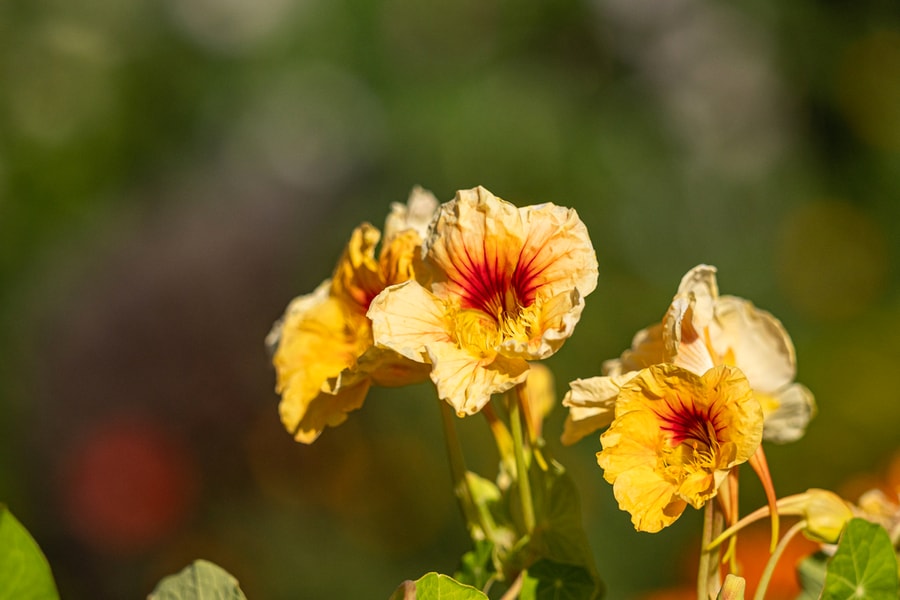
To grow nasturtium, plant the seeds in well-drained soil in full sun to partial shade. Nasturtium prefers neutral to slightly acidic soil with a pH of 6.0–7.0. Sow the seeds ½ inch deep and thin the seedlings to 12 inches apart when they are 3–4 inches tall. Nasturtium can be directly seeded or started indoors 4–6 weeks before the last frost date. Nasturtium is a heat-loving plant and will not tolerate frost.
When To Plant
Nasturtiums are relatively easy to grow and can be planted in spring or fall. In most cases, it is best to plant them in the spring so that they have a chance to establish themselves before the hot summer months. However, if you live in an area with a mild climate, you can plant them in the fall.
Where To Plant
Nasturtiums can be planted in either full sun or partial shade. They prefer well-drained soil that is rich in organic matter.
If you are growing them in containers, make sure to use a potting mix specifically designed for container plants.
How To Care
Nasturtiums are relatively easy to care for. They do not require a lot of water, but they must be watered regularly. It is generally best to water them once or twice a week. You may need to water them more frequently during the hot summer months.
These plants also benefit from being fertilized periodically. A general-purpose fertilizer or a fertilizer specifically designed for flowering plants can be used. Apply the fertilizer according to the package directions.
In addition to watering and fertilizing, nasturtiums also benefit from being deadheaded. Deadheading is the process of removing spent flowers from the plant. This helps to encourage the plant to produce more flowers.
Conclusion
So, what does nasturtium repel? Nasturtium is a versatile plant that can control pests in various ways. Its strong scent helps to repel whiteflies, caterpillars, aphids, slugs, ground beetles, and flea beetles.
Additionally, the nasturtium can be used as a trap crop to attract pests away from other plants. Growing nasturtium is also easy and requires little care.
Finally, its qualities make nasturtium an ideal plant for anyone looking for an environment-friendly way to control pests in their garden.
Frequently Asked Questions
What Plants Benefit from Nasturtium?
Nasturtiums are not just pretty flowers but can also benefit some plants. Broccoli, cabbages, cauliflower, cucumbers, kale, and pumpkins all do well when nasturtiums are planted nearby. Nasturtiums attract beneficial insects like ladybugs and hoverflies, which encourage pollination.
What Can Nasturtiums Be Used For?
Nasturtiums can also be used as pest control. Their strong scent confuses pests, and their peppery taste deters them from eating your plants. Nasturtiums are also a great plant to have around if you get cuts or scrapes often. The antiseptic properties in nasturtiums can help to fight infection. If you are struggling with respiratory issues, nasturtiums can also help to clear your congestion.







